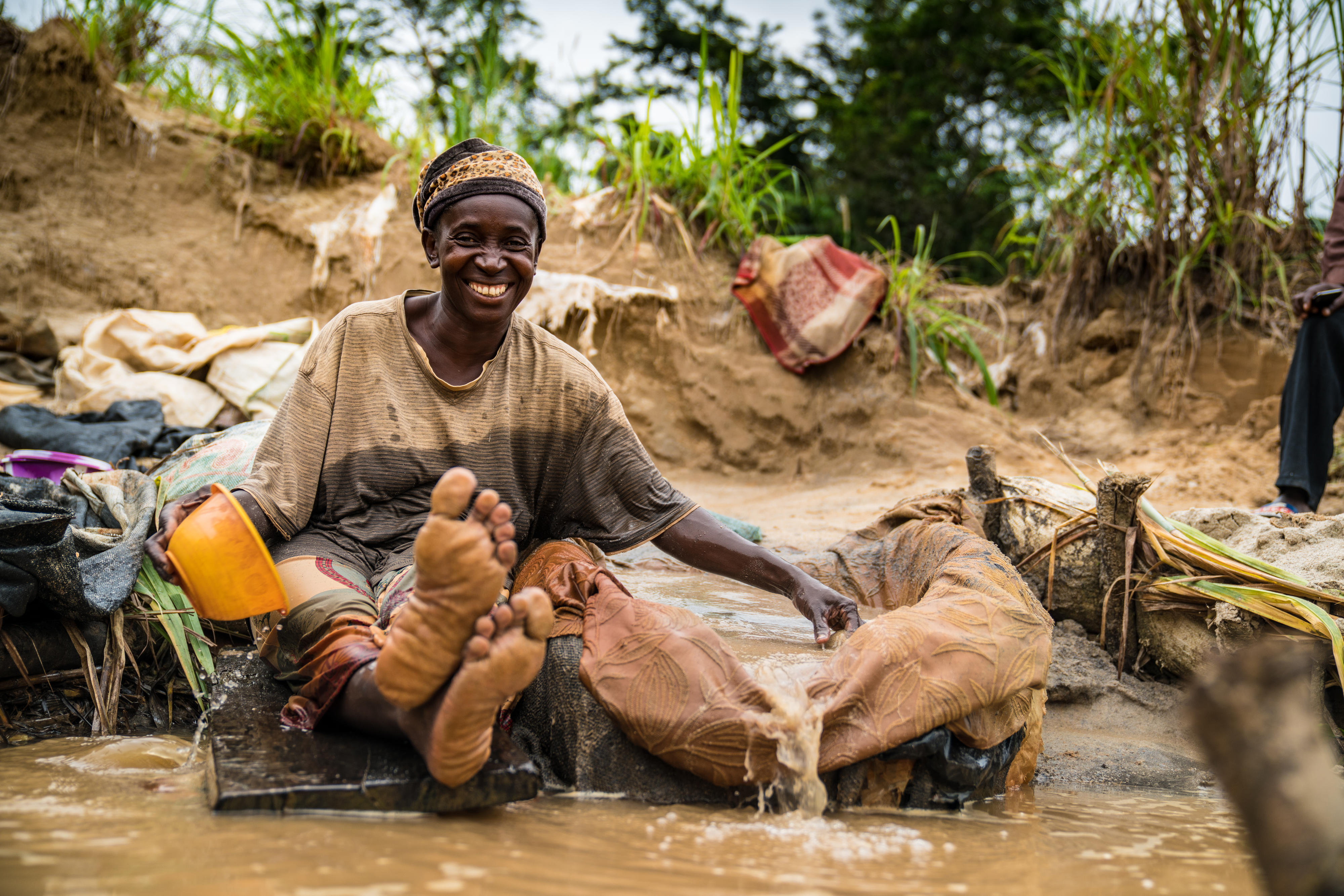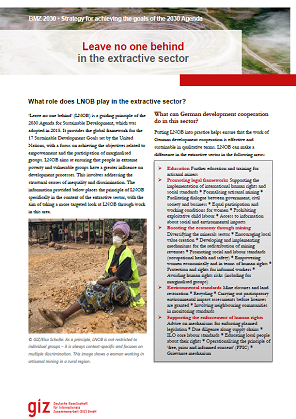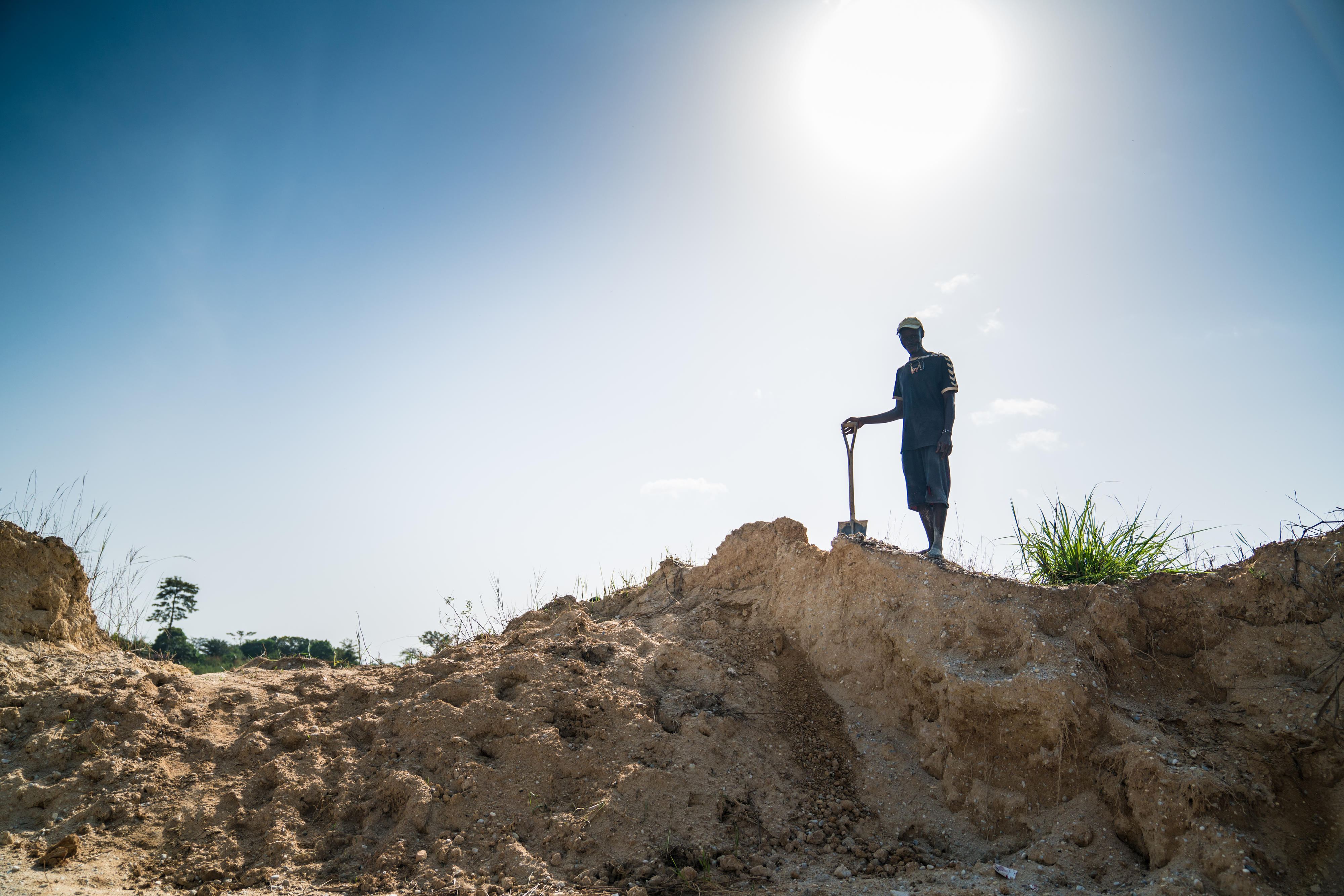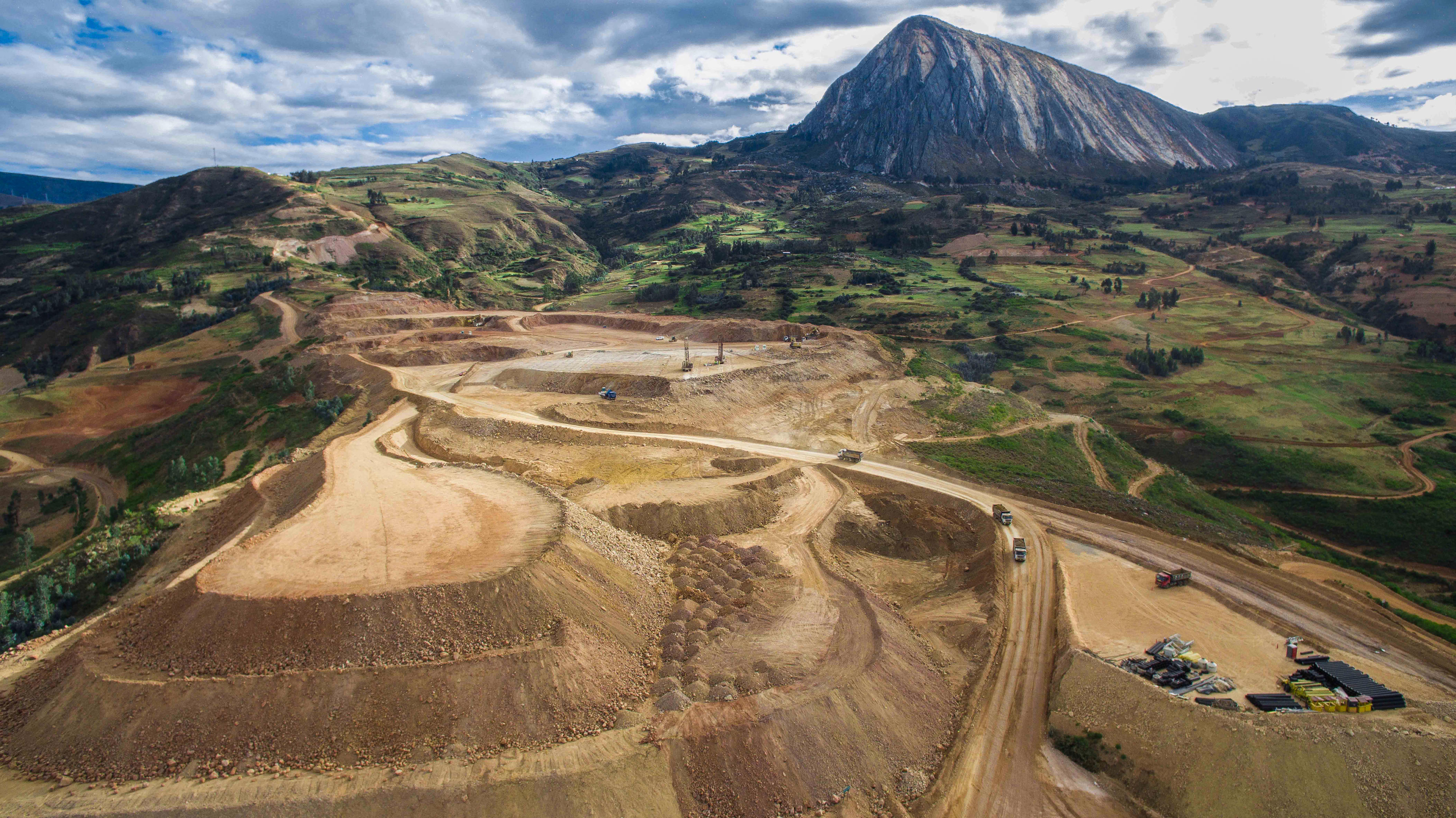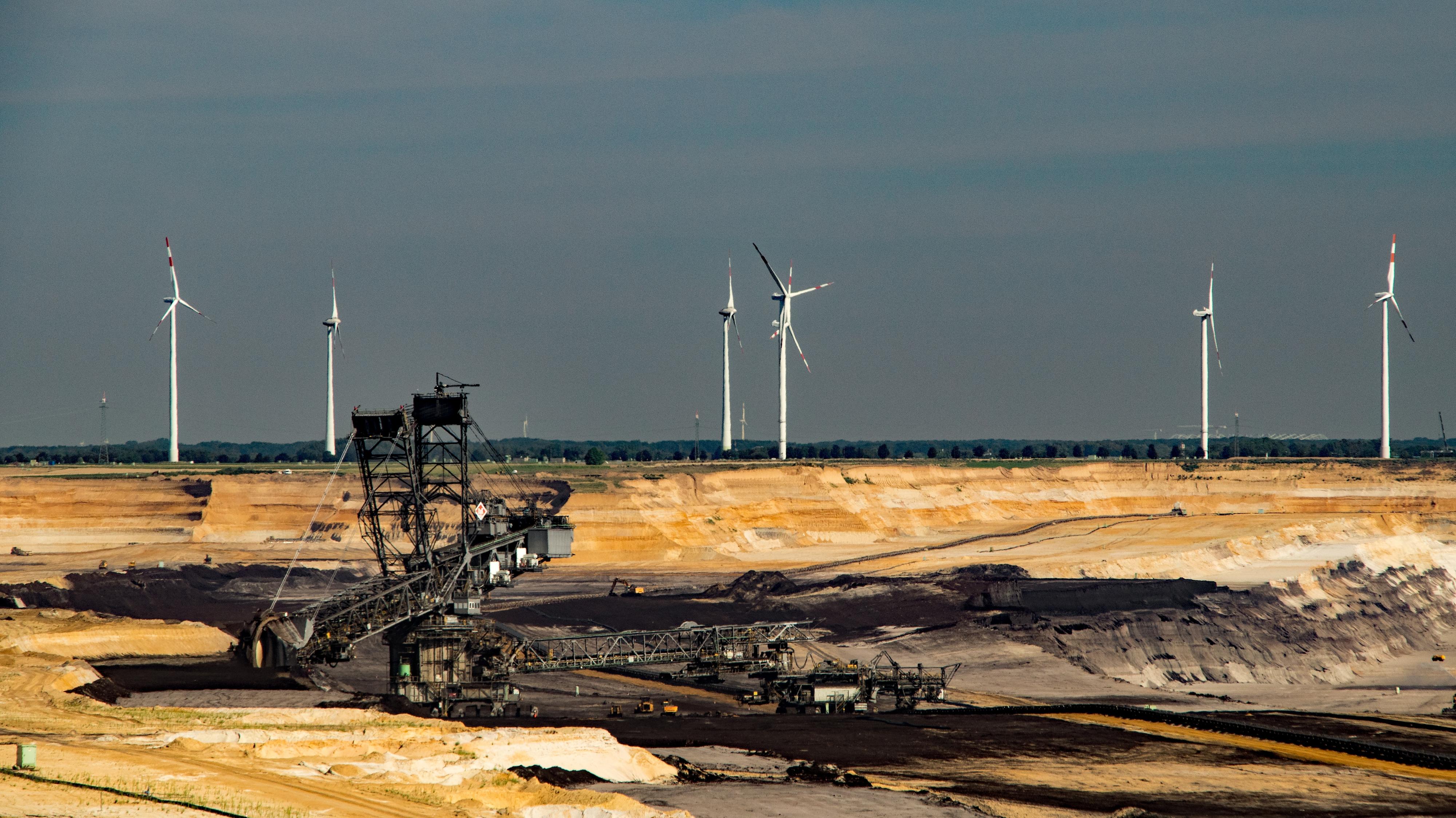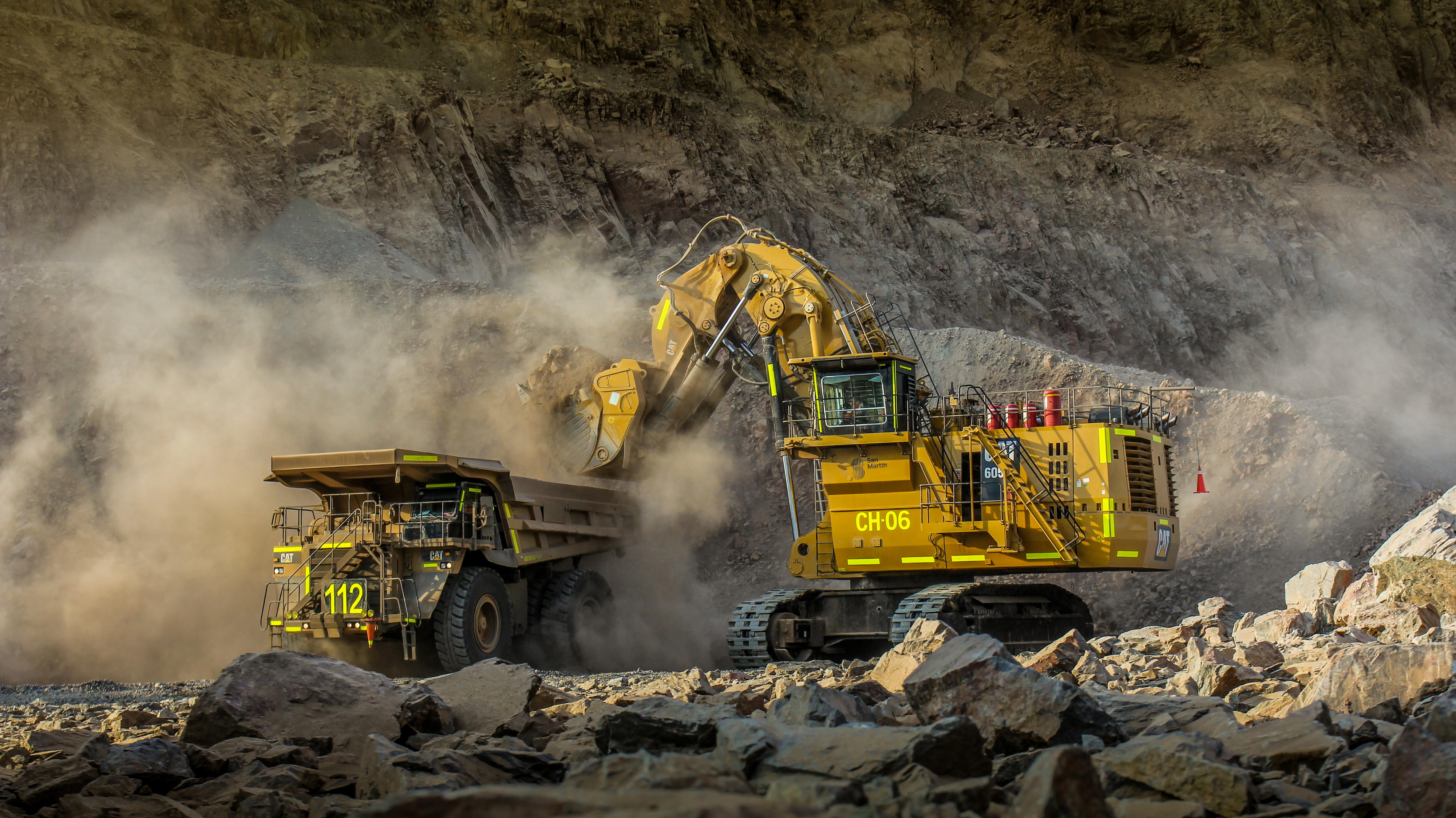Copyright© GIZ/Michael Duff
Environment, Climate and Society Leave No One Behind – LNOB in the extractive sector
The global community has agreed to reach and support the poorest of the poor in the implementation of the Agenda 2030. But how does LNOB fit into the extractive sector and what is German development cooperation doing to ensure that mining “leaves no one behind”?
Background
Three quarters of the people living in poverty reside in countries whose economies are heavily dominated by raw materials. The relevance of the raw materials sector will continue to increase in the coming years in light of a global energy and mobility transition. Renewable energy technologies are urgently needed to meet the climate targets of the Paris Agreement and they are very resource intensive. According to estimates by the European Commission, eighteen times as much lithium and five times as much cobalt will be required in the EU by 2030 as compared to today. It is therefore paramount that marginalized people and groups as well as people in extreme poverty become the focus of development processes in the raw materials sector and that structural causes of inequality and discrimination are addressed.
- According to estimates by the World Bank, around 40 million people worldwide work in ASM - mostly as informal workers - and are often exposed to unsafe working conditions such as a lack of occupational health and safety.
- Of these, 30-50% are women, depending on the country, while only 10% of employees in industrial mining are women. The working reality of women in the mining sector is characterized by structural disadvantage, wage injustice and inadequate health protection. In addition, they are often affected by sexual violence and prostitution in the vicinity of the mines.
- In addition, according to estimates by the International Labor Organization (ILO), around 1 million children around the world work in mining. Some of them working in the worst forms of child labor. There is a lack of legal regulations and enforcement mechanisms as well as school and vocational training. This results in a lack of economic prospects.
- Indigenous peoples are also severely affected by the negative effects of the raw materials sector. In regions rich in natural resources, violent conflicts and the destruction of livelihoods can arise, when mining advances into socio-ecological sensitive regions such as forests. According to estimates by the United Nations, around 15 million indigenous people are forcibly relocated every year due to large investment and development projects, particularly in the extractive raw materials sector. Collective consultation and consent rights (free, prior and informed consent, FPIC) are often disregarded.
- Extraction of raw materials requires the use of large amounts of water, which are around some mine-sites returned to rivers as toxic wastewater. Negative consequences can be the loss of biodiversity, soil degradation, damage to health, water pollution and the deprivation of livelihoods, thereby pushing people into poverty and marginalization.
Project examples of German development cooperation for anchoring LNOB in the extractive sector
However, the raw materials sector not only has negative effects on humans and the environments, it is also an important source of income for many and thus harbors a lot of potential to enable people to find their way out of poverty. The examples given below give an impression of how the raw materials sector must be designed to “leave nobody behind”.
Integrated economic development in the raw materials sector in Mauritania
- The project promotes local added value in industrial mining: The industrial mining sector imports almost everything it uses, this includes industrial goods, food and services. By increasing local added value, those imports are substituted, thus creating jobs and income for local people who would otherwise be unemployed or working in lower skilled and lower paid employment.
- The project carries out a study on mercury-free alternatives in gold extraction in small-scale mining and thus contributes to better working conditions, health protection and environmental protection. The working conditions in the artisanal mining sector are hard and dangerous. The project provides for better working conditions. Project studies showed most miners are uneducated, poor and have family. The project benefits these men and women as well as their families.
Sustainable economic development in the mining sector (External link) in the DR Congo
- Accompanies mining cooperatives in their activities to support them in compliance with international standards in the mining sector.
- Contains standards on the subject of human rights with a special focus on the eradication of child labor. In this context, a catalog of standards will be developed, and information and training modules will be set up.
MinSus – Project (External link) in the Andean region
- MinSus has supported the Ombuds-institutions in the Andean region to improve and digitalise their complaint mechanisms. This work has helped ensure that mining-impacted communities have access to complaint mechanisms during the COVID pandemic where in-person complaints could not be submitted.
- MinSus has worked with civil society in the Andean region to develop recommendations to emerging mineral certification schemes such as IRMA and CopperMark on how these can be adapted in order to also serve as an important source of information to mining-impacted communities.
German development cooperation is already actively implementing the LNOB principle in several projects in the raw materials sector and thus contributing to the inclusion of marginalized groups and people in development processes.
